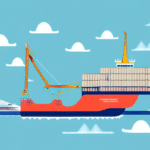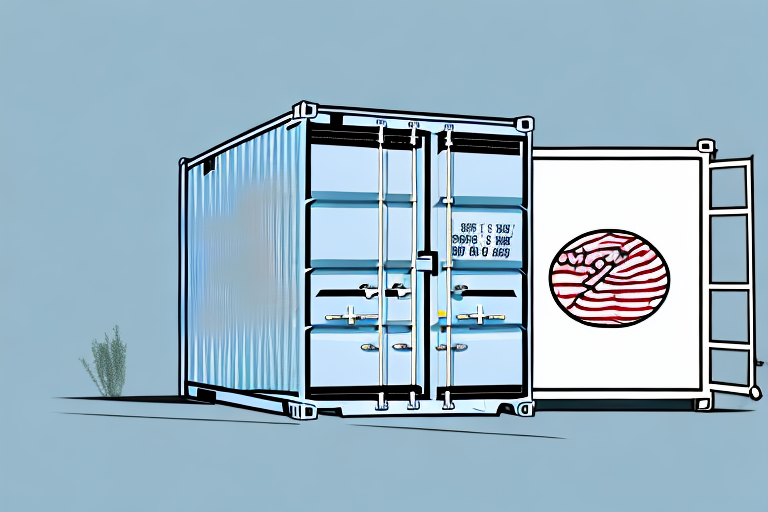Understanding Freight On Board (FOB) Shipping Point
Freight On Board (FOB) Shipping Point is a pivotal shipping term in international trade agreements. It defines the exact point at which ownership and liability of goods transition from the seller to the buyer. Specifically, at the shipping point, the buyer assumes responsibility for the goods, including all associated risks and costs once the goods are loaded onto the carrier.
Types of Shipping Points in Freight Transport
FOB Shipping Point
Under FOB Shipping Point, the seller's responsibility ends once the goods are loaded onto the carrier. The buyer is then responsible for transportation costs, insurance, and any damages that may occur during transit.
FOB Destination
Conversely, FOB Destination means that the seller retains ownership and responsibility for the goods until they reach the buyer's specified location. The seller covers all transportation costs and bears the risks of loss or damage during transit.
Operational Mechanics of FOB Shipping Point
The implementation of FOB Shipping Point involves several key steps:
- Agreement: Buyer and seller agree on FOB Shipping Point in their sales contract.
- Loading: Seller is responsible for loading the goods onto the carrier at the designated shipping point.
- Transfer of Risk: Once loaded, ownership and risk transfer to the buyer.
- Transportation: Buyer manages and pays for the transportation from the shipping point to the final destination.
According to the International Chamber of Commerce, clear definitions in Incoterms like FOB help mitigate disputes by outlining each party's responsibilities.
Advantages and Disadvantages of FOB Shipping Point
Advantages
- Control Over Shipping: Buyers can select their preferred carriers and shipping methods.
- Cost Efficiency: Potentially lower shipping costs as buyers negotiate directly with carriers.
- Faster Delivery: Direct arrangement can lead to quicker handling and transit times.
Disadvantages
- Increased Risk: Buyers bear the risk of loss or damage once the goods are shipped.
- Responsibility for Logistics: Buyers must manage transportation logistics, which can be challenging for smaller businesses.
- Potential for Disputes: Clarifying the exact point of transfer can sometimes lead to misunderstandings.
Comparing FOB Shipping Point with Other Freight Terms
FOB Shipping Point vs. CIF (Cost, Insurance, and Freight)
While FOB Shipping Point transfers ownership once goods are shipped, CIF requires the seller to cover costs, insurance, and freight until the goods reach the buyer's port of destination. This makes CIF more advantageous for buyers seeking less logistical involvement.
FOB Shipping Point vs. DDP (Delivered Duty Paid)
DDP places maximum responsibility on the seller, who handles all aspects of shipping, including duties and taxes, until the goods are delivered to the buyer's location. In contrast, FOB Shipping Point shifts much of this responsibility to the buyer once shipping begins.
Best Practices and Common Mistakes with FOB Shipping Point
Best Practices
- Clear Contract Terms: Define the shipping point and responsibilities explicitly in the contract.
- Insurance Coverage: Buyers should secure adequate insurance to protect against potential losses.
- Effective Communication: Maintain open lines of communication with carriers to monitor shipments.
Common Mistakes to Avoid
- Neglecting Insurance: Failing to obtain insurance can lead to significant financial losses in case of damage or loss.
- Poor Documentation: Incomplete or unclear contracts can result in disputes over responsibilities.
- Ignoring Carrier Reliability: Choosing unreliable carriers can increase the risk of delays and damages.
Future Trends and Case Studies in FOB Shipping Point
Future Trends
The evolution of global trade logistics is shaping the future of FOB Shipping Point. Technological advancements such as blockchain for transparent tracking and automation in supply chain management are enhancing the efficiency and reliability of FOB agreements. Additionally, the increasing emphasis on sustainability is pushing companies to adopt greener transportation methods.
Case Studies
- Technology Sector: A leading electronics manufacturer reduced shipping delays by implementing a robust FOB Shipping Point strategy, allowing for better carrier selection and real-time shipment tracking.
- Agricultural Goods: An agricultural exporter minimized product spoilage by negotiating FOB terms that included specialized refrigerated carriers, ensuring goods remained fresh during transit.
Conclusion
Freight On Board (FOB) Shipping Point is a fundamental component of international trade, offering both opportunities and challenges for buyers and sellers. By understanding the mechanics, advantages, and potential pitfalls of FOB Shipping Point, businesses can make informed decisions that enhance their supply chain efficiency and mitigate risks. Adopting best practices and staying abreast of industry trends will further ensure successful and sustainable freight operations.






















